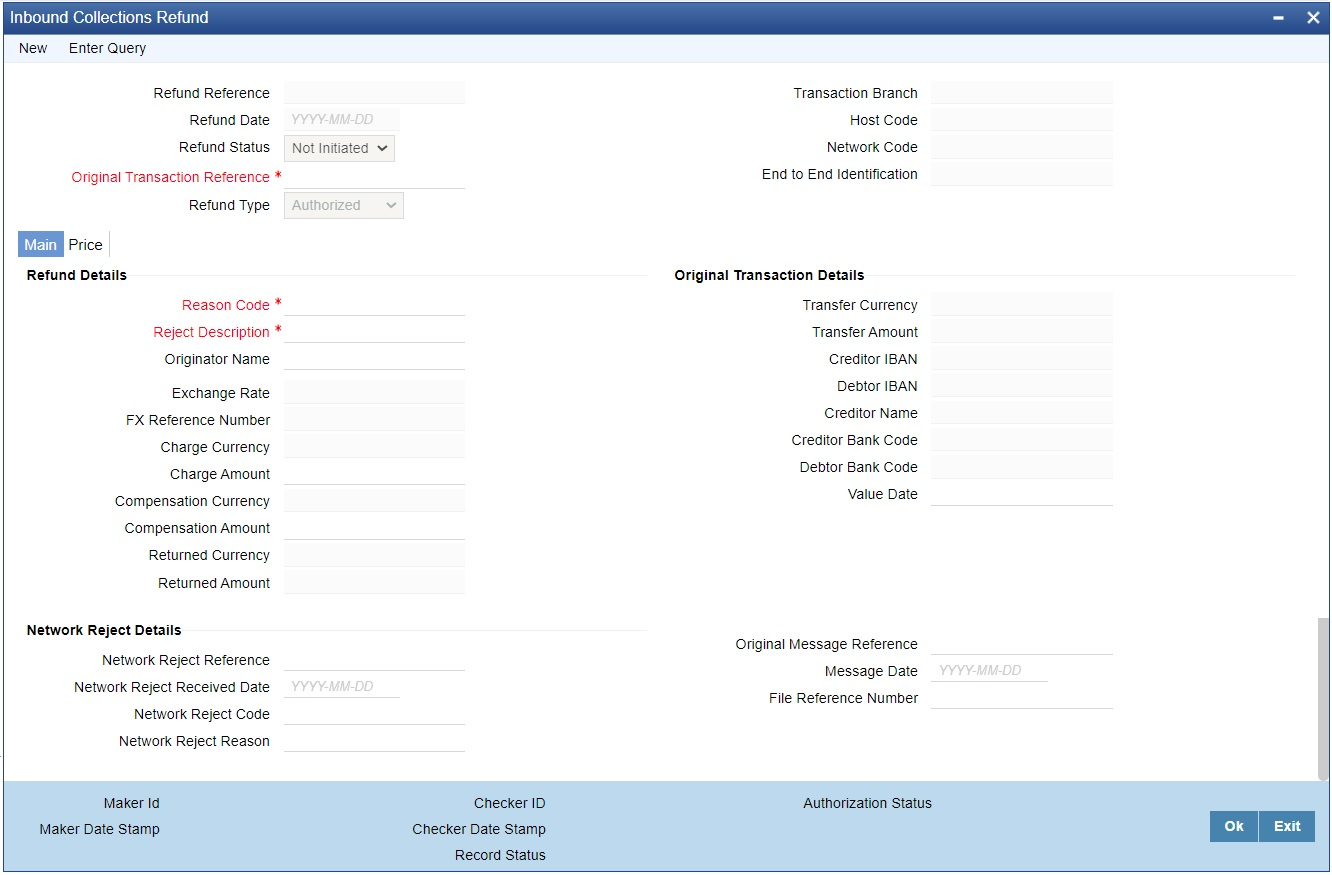Inbound Collections Refund
An incoming collections transaction can be requested for refund by the debtor bank, post its settlement. The debtor bank initiates the same based on the debtor customer request or due to debtor bank internal reasons.
Refund is initiated on or after the value date of the incoming collection transaction. Thus, the transaction is liquidated by then.
To originate the refund for incoming collections, this screen is used. Provision to mark the refund type as authorized or unauthorized is available.
